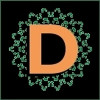Abstract
This paper focuses on two relatively early Shakespeare plays, Titus Andronicus and King John which involve bastardy as a significant theme. In the latter case, this is a literal bastard, Philip Faulconbridge, while the former involves a socio-political illegitimate, Aaron the Moor, a black African machiavel, father to a bastard child during the course of the play. It will consider various direct and indirect forms of violence, physical, verbal and emotional, individual and collective, and consider the relationship between perpetrating violence and being a victim of it. I will begin by tracing the roots of Shakespeare’s illegitimates in the late medieval Morality Vice, showing how the dramatic values and effects this type embodies continue to live on in late sixteenth century drama, though now located within a hybrid human type rather than as an external element, and the significance of this change in relation to considerations of the causes and nature of violence. The illegitimacy and alterity of these two quasi-protagonists, Aaron and Faulconbridge, and the extent to which the connection between bastardy and violence that surrounds them can be seen to be a product of their shared dramatic heritage, their complex identities, and their historical-fictive hybridity, will be considered in the course of this paper.
How to Cite:
Prince, T., (2014) “'Bastards of the Time': the Violent Contexts and Dramatic Ancestry of Bastards and Illegitimates in 'Titus Andronicus' and 'King John'”, Dandelion: Postgraduate Arts Journal and Research Network 5(1). doi: https://doi.org/10.16995/ddl.314
Downloads:
Download PDF

